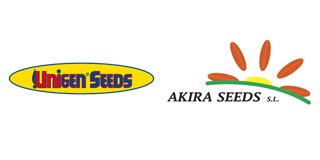
UNIGEN SEEDS SPAIN
Tap water is sufficient to keep quality and longevity of ornamental ginger inflorescences
Techniques to prolong the longevity of ornamental ginger (Zingiber spectabile) are essential because it is a species much appreciated as cut inflorescence in floral arrangements. The aim of this study was to evaluate the effect of different commercial products and different vase solutions on postharvest longevity and quality of ornamental ginger inflorescences. Inflorescences were placed in a plastic vase containing 1 L of vase solution and kept at room temperature. Evaluated treatments were: T1 (tap water), T2 (HidrosanTM - 0.8 g L-1 sodium dichloroisocyanurate),
19 March, 2021
Techniques to prolong the longevity of ornamental ginger (Zingiber spectabile) are essential because it is a species much appreciated as cut inflorescence in floral arrangements. The aim of this study was to evaluate the effect of different commercial products and different vase solutions on postharvest longevity and quality of ornamental ginger inflorescences. Inflorescences were placed in a plastic vase containing 1 L of vase solution and kept at room temperature. Evaluated treatments were: T1 (tap water), T2 (HidrosanTM - 0.8 g L-1 sodium dichloroisocyanurate), T3 (AspirinTM - acetylsalicylic acid - 1 tablet L-1 of tap water), T4 (50 mg L-1 sodium hypochlorite), T5 (5% coconut water + HidrosanTM - 0.8 g L-1 sodium dichloroisocyanurate), T6 (1 L of tap water + 10 ml of lemon juice + 6 g of sucrose + 50 mg L-1 sodium hypochlorite). The experimental design was completely randomized with four replications and three inflorescences per plot. The completely randomized design with split plot in time was used to evaluate the fresh weight behavior over time. The inflorescences kept in vase solution containing HidrosanTM showed a small difference between initial and final fresh weight and the inflorescences kept in solution composed of coconut water plus HidrosanTM, showed a bigger difference. There was no significant difference between treatments for quality, longevity, water absorption, and anatomical structures. The average longevity of inflorescences was 9 days. Based on the results obtained, it can be concluded that tap water is sufficient to keep quality and longevity of ornamental ginger inflorescences. Sources Lessa, M.A., Almeida, E.F.A., Nascimento, A.M.P., Curvelo, I.C.S., Reis, S.N., Nogueira, D.A., Nery, F.C. and Paiva, P.D.O. 2015. POSTHARVEST CONSERVATION OF ORNAMENTAL GINGER (ZINGIBER SPECTABILE). Acta Hort. (ISHS) 1060:307-313 Picture by www.flickr.com









